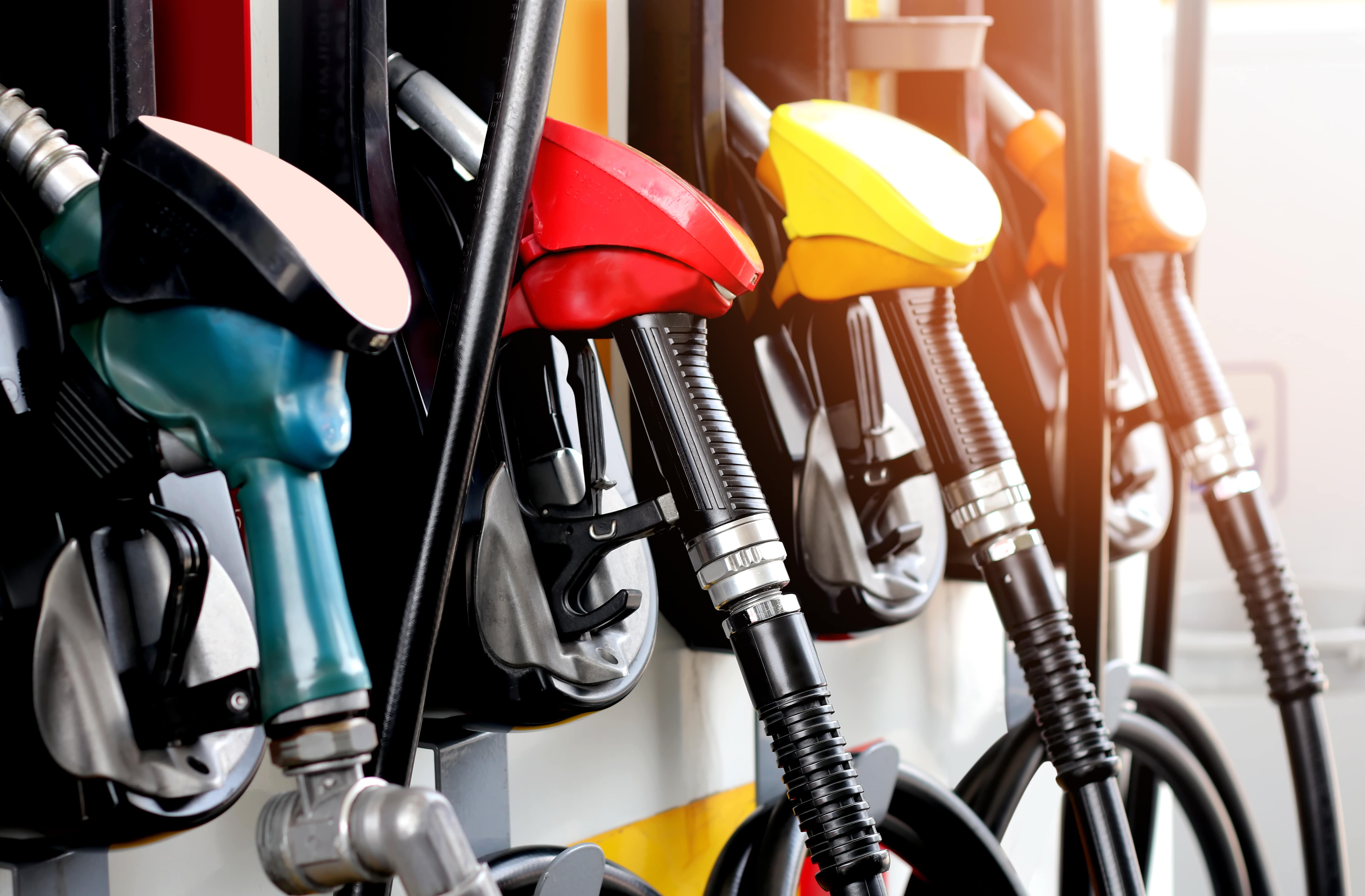
Guest
Spritspartipps für Lkw-Fahrer
Erstellt: 16.08.2024
•
Aktualisiert: 10.10.2024
Der Kraftstoffverbrauch von Fahrzeugen ist einer der wichtigsten Aspekte, der die Kosten von Transportunternehmen beeinflusst. Es ist wichtig zu wissen, wie man die Kraftstoffeffizienz verbessern kann, sowohl als Manager als auch als Fahrer. Bei SNAP wollen wir alle, die mit dem Güterverkehr zu tun haben, professionell unterstützen. Deshalb haben wir eine Liste mit Tipps zusammengestellt, die bei der Kraftstoffeffizienz im Straßenverkehr helfen können.
Warum ist der Kraftstoffverbrauch so wichtig?
Um die Bedeutung der Kraftstoffeffizienz zu verstehen, sollte man sich vor Augen führen, welche Rolle die Kraftstoffkosten in den Budgets der Transportunternehmen spielen. Verschiedenen Berichten zufolge machen die Kraftstoffkosten zwischen 25 und 35 % der Ausgaben von [Flottenbetreibern] aus (https://snapacc.com/fleet-operators/). Durch die Anwendung von Spritspartipps können die Kosten erheblich gesenkt werden, so dass ein großer Teil des Budgets für andere Investitionen zur Verfügung steht.
Ein weiterer Aspekt, warum es sich lohnt, Kraftstoff zu verbrauchen, ist die Ökologie. Obwohl sich Elektrofahrzeuge im Güterverkehr langsam durchsetzen, bestehen die meisten Fuhrparks noch immer überwiegend aus Lkw mit herkömmlichen Verbrennungsmotoren. Da der Verkehr für ein Fünftel der weltweiten Schadstoffemissionen verantwortlich ist, können Tipps zum Kraftstoffsparen nicht nur Ihnen und Ihrem Unternehmen helfen, sondern auch dem Planeten insgesamt.
Tipps zum Kraftstoffsparen von SNAP für Fahrer in Großbritannien und Europa
Um Sie bei der Bekämpfung steigender Kosten und der Reduzierung von Schadstoffemissionen zu unterstützen, haben wir eine Liste mit Tipps für eine optimale Kraftstoffeffizienz Ihrer Flotte zusammengestellt. Diese basieren auf tatsächlichen Erfahrungen und Empfehlungen von vertrauenswürdigen Industriepartnern - Sie können sicher sein, dass die Umsetzung unserer Tipps einen großen Einfluss auf Ihren Kraftstoffverbrauch haben wird.

1. Langsam und gleichmäßig gewinnt das Rennen
Auch wenn die Versuchung groß ist, so schnell wie möglich ans Ziel zu kommen, ist es wichtig, die Geschwindigkeitsbegrenzungen zu beachten. Die aktuellen Grenzwerte gelten seit 2015 und legen die Höchstgeschwindigkeit auf einspurigen und zweispurigen Straßen auf 50 bzw. 60 mph und auf Autobahnen auf 70 mph fest. Für Fahrzeuge über 7,5 Tonnen (wobei das Gewicht sowohl aus dem Pkw-Lkw-Gewicht als auch aus dem Gewicht der Ladung berechnet wird) gelten strengere Geschwindigkeitsbegrenzungen, darunter 60 km/h auf Autobahnen. Es ist hinlänglich bekannt, dass eine gleichmäßige Fahrweise und das Einhalten der Geschwindigkeitsbegrenzungen zu einem geringeren Kraftstoffverbrauch des Fahrzeugs beiträgt und darüber hinaus hilft, Bußgelder für Geschwindigkeitsüberschreitungen zu vermeiden und das Unfallrisiko deutlich zu verringern.
2. Informieren Sie sich über den Kraftstoffverbrauch
Um die Auswirkungen Ihres Fahrstils auf die Transportkosten zu verstehen, müssen Sie sich mit den Feinheiten des Kraftstoffverbrauchs vertraut machen. MPG ist die gebräuchlichste Einheit zur Messung des Flottenverbrauchs. Die Berechnung ist recht einfach, aber die Einheiten können verwirrend sein, da die meisten Tankstellen im Vereinigten Königreich und in Europa Kraftstoff in Litern verkaufen. Eine britische Gallone entspricht 4,546 Litern. Die meisten aktuellen Fahrzeuge bieten MPG-Statistiken für unterwegs, so dass Sie Ihren Kraftstoffverbrauch während der Fahrt leicht überwachen können.
3. Weniger bremsen und mit gleichmäßigem Tempo fahren
Eine ruhige Fahrweise kann Wunder für den Kraftstoffverbrauch eines Lkw bewirken. Setzen Sie die Motorbremse ein, wo immer Sie können, halten Sie einen sicheren Abstand zu anderen Fahrzeugen und vor allem: Fahren Sie mit gesundem Menschenverstand. Bleiben Sie wachsam, um Situationen, in denen Sie langsamer fahren müssen, schnell zu erkennen, und passen Sie die Geschwindigkeit entsprechend an, um sicher zu fahren und gleichzeitig den Kraftstoffverbrauch zu senken.
4. Fahren Sie wenn möglich in höheren Gängen
Ein weiterer Aspekt, den Sie berücksichtigen müssen, ist die Funktionsweise des Motors: Höhere Gänge bedeuten weniger Umdrehungen pro Minute, was eine geringere Belastung für den Motor bedeutet. Wenn Sie nicht gerade bergab fahren oder den Gang zum Überholen herunterschalten, sollten Sie möglichst im höchsten Gang bleiben. Dies ist eine der wichtigsten Fahrtechniken, um Kraftstoff zu sparen.

5. Kümmern Sie sich um Ihr Fahrzeug
Kümmern Sie sich um Ihr Fahrzeug und es wird sich um Sie kümmern. Warten Sie Ihr Fahrzeug regelmäßig, achten Sie auf den Ölstand und den Reifendruck, und kontrollieren Sie die Motorleistung. Diese Tipps zum Kraftstoffsparen können viel bewirken und Reparaturen und andere Wartungsarbeiten hinauszögern. Ein oft übersehener Aspekt der Kraftstoffeinsparung bei Flottenfahrzeugen sind richtig aufgepumpte Reifen, die den Kraftstoffverbrauch um bis zu 2 Prozent senken können.
6. Planen Sie Ihre Route und informieren Sie sich über die Straßenverhältnisse
Wenn Sie Ihre Route im Voraus planen, können Sie vermeiden, dass Sie falsch abbiegen und unnötig viele Kilometer zurücklegen. Dies wird oft automatisch von Ihrem Navigationsgerät erledigt, aber Sie müssen sich auch über mögliche Umwege und schlechte Straßenverhältnisse informieren, um Ihre Route weiter zu optimieren.
7. Die Aerodynamik im Auge behalten
Was bei Tipps zum Spritsparen oft übersehen wird, ist der Einfluss des Luftwiderstands auf den Kraftstoffverbrauch. Bei höheren Geschwindigkeiten kann sogar ein geöffnetes Fenster den Spritverbrauch beeinträchtigen. Aerodynamische Verluste können den Kraftstoffverbrauch um bis zu 20 % erhöhen - diesen Punkt sollten Sie beim Fahren unbedingt berücksichtigen.
8. Verwenden Sie die sparsamsten Lkw
Dieser Tipp richtet sich eher an Fuhrparkleiter, aber auch als Fahrer sollten Sie daran denken. Es ist zwar schwer, den sparsamsten Lkw herauszufinden, aber an kraftstoffsparenden Lkw mangelt es definitiv nicht - vor allem nicht an neueren Modellen. Lkw mit einem guten Kraftstoffverbrauch sind für jedes Transportunternehmen von großem Vorteil. In manchen Fällen sind die Anschaffungskosten für die Lkw mit dem besten MPG-Wert zwar höher als für eine Alternative, die mehr Kraftstoff verbraucht, aber die Einsparungen machen sich über einen längeren Zeitraum bemerkbar.
9. Schalten Sie den Motor im Leerlauf ab
Vor allem, wenn Sie von der Autobahn abfahren und Ihr Ziel erreichen, das vielleicht in einer Stadt liegt, kann es vorkommen, dass Sie auch für längere Zeit im Stau stehen. In solchen Fällen lohnt es sich, den Motor für eine Weile abzustellen. Selbst die sparsamsten Lkw profitieren davon - gleichzeitig können Sie die Emissionen und den Lärmpegel senken.
10. Nutzen Sie vertrauenswürdige Lösungen, die Ihnen unterwegs helfen
Die Suche nach einem Parkplatz oder einer guten Tankstelle kann Ihre Route um viele unnötige Kilometer verlängern. Um diesen Prozess zu beschleunigen, können Sie TMS-Software (Transport Management System) verwenden - die SNAP-Plattform ist sowohl für Flottenbetreiber als auch für Fahrer verfügbar. Zu den verfügbaren Funktionen gehört das SNAP-Parking-Modul, mit dem Sie [Lkw-Haltestellen] (https://snapacc.com/map/) und Depot-Parkplätze finden können - so sparen Sie Zeit und Kraftstoff.

Fazit: Fahren Sie gleichmäßig, berücksichtigen Sie die Aerodynamik, verwenden Sie das richtige Fahrzeug und nutzen Sie die Funktionen des SNAP-Kontos
Wie erreichen Sie einen optimalen Kraftstoffverbrauch Ihres Fahrzeugs? Es gibt viele Möglichkeiten, den Kraftstoffverbrauch zu senken - von einem ruhigen und gleichmäßigen Fahrstil über die Verwendung der sparsamsten Lkw bis hin zur Beachtung der Aerodynamik und der Wartung des Lkw. Sie können auch großartige Ergebnisse erzielen, indem Sie die auf der SNAP Account-Plattform verfügbaren Funktionen wie SNAP Fuel und SNAP Parking nutzen.
Unsere Lösungen helfen derzeit über 185.000 Fahrern in ganz Europa und unterstützen mehr als 8.500 Flotten bei der Einsparung von Kraftstoffkosten. Die Ausgaben für Kraftstoff können 25-35 % der Ausgaben eines Transportunternehmens ausmachen - neben den wirtschaftlichen Vorteilen ist die Kraftstoffeffizienz auch für die Umwelt von entscheidender Bedeutung, da sie zur Reduzierung der Emissionen beiträgt.



